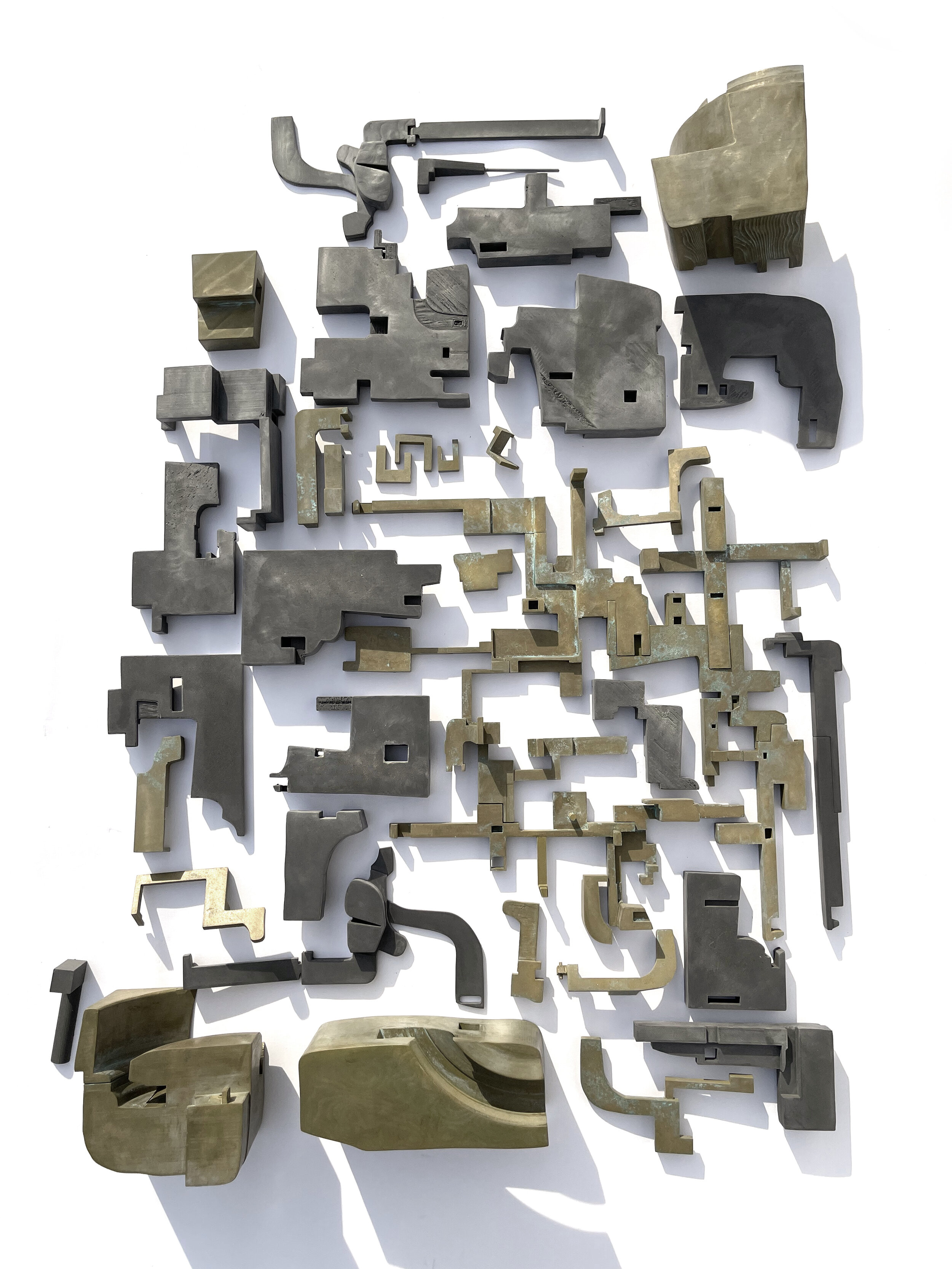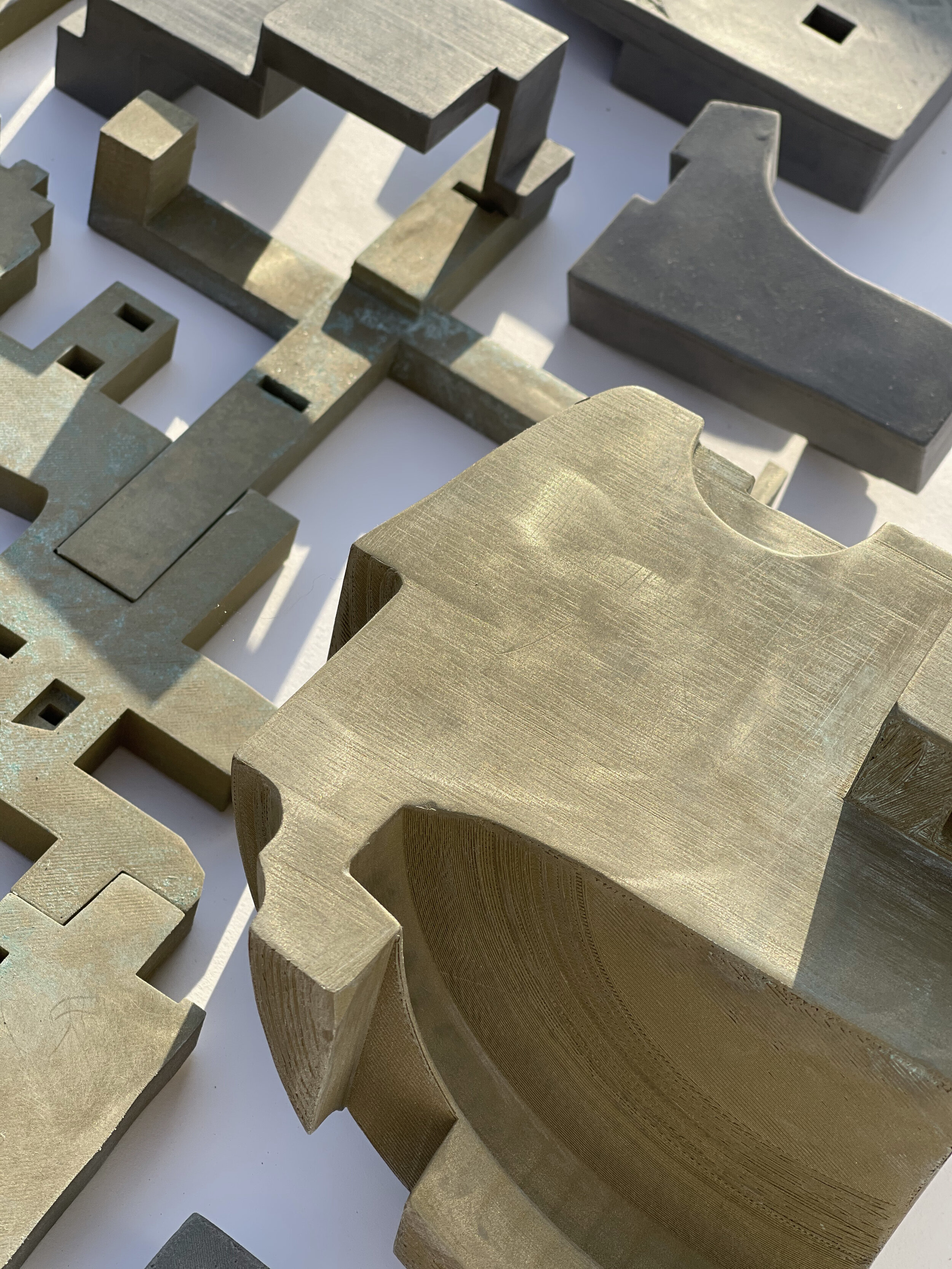
IN DETAIL : Puzzling Forms of Assembly
The project starts with a series of investigations in the Berrocal titled “Bijou”. From the formal aspect, the puzzle maintain a monolithic state but still carries certain tectonic qualities to the composition.
3d puzzle approach to the spatial arrangement of the proposal is another way to challenge the typology of the current inhabitability concept. The interlocking nature of the puzzle assembly puts an emphasis on the fact that nature itself is an integrated system of multiple interlocking networks. The intention is also revealed in the sectional quality of the proposal which consist of a multitude of possibilities through carefully arranged gaps and apertures that lead the landscape into the building. It also offers a few layers of accessibility allowing the public to experience the interiors while the building is closed.
Puzzling Immersion
Original Puzzle “Bijou”
From an aesthetic point of view, Bijou was built in a compositional approach, and at the same time is able to maintain the mechanical precision to a certain level.
The look is brutal and somewhat whimsical which we appreciate and intend to keep those qualities in our following abstraction. The key element we took away from the Berrocal assembly process was the very first step, a distinct rotational movement. The piece wraps around and extends to reach the other side of the mass. The rotation is an important anchor to the general assembly.
3D Puzzle
The intention of the transformation process is to break down the monolithic state of the original Berrocal and brings in more of the tectonic quality to the puzzle. Each of them has their unique contribution to the success of the final puzzle assembly. Some of the instruments are wrapping around and latching on to the bigger mass to form the assembly. Other parts are essential to secure the locking operation.
3D Puzzle Assembly
The final transformation remains the original assembly idea from the Berrocal, The puzzle relies on the tension between the masses and the instruments, and the tension among the instruments themselves to hold itself together as a completed piece.
2D Puzzle
The 2D puzzle can be described as two distinct systems. One is the masses which carries brutal aesthetic quality. The other is the operational mechanism which forms another tectonic system that consists of smaller instruments which are rotating, latching and interweaving the project together.
The 2d puzzle expresses a very clear network. It has developed a structural language by having the backbone as the base, the masses in between and the keys on top to lock down the system.
The form of the masses remains a brutal aesthetic inherent from the Bijou and interacts with the structure in a various ways through elevation. the 2D puzzle becomes a guidance and explanation of how the system can be integrated with the site.
There are 3 keys which have been used in the system, plug-in, slide-in, and rotational keys to secure the system.
Through the physical model making, we experimented with materiality and also explored the possibility to integrate the 3d and 2d puzzles.
SITE
Carrying on all the attributes into our abstraction of the site through preserving the formalism of the original barrocal and also developed the playfulness of the tectonic instruments. The site has been laid out based on our 2d puzzle language. The backbone system interacts with the ground and grows into the pathways and bridges, the masses become larger lots ready to be used for future development.
The main entrance into the site is from the road down from the south end and we also created 4 more pedestrian access under the railroad to connect to the park next to our site. The overall arrangement lines up with the nearby neighborhood. The planning conveys the underlying logic of interlocking and a sense of flexibility to grow in the future.
DETAIL
The stairs are the perfect starting point to think about the interscalibility of our puzzle assembly. They offer a middle ground bridging elements of various sizes, from the landscape to the building, from the building to the center showcase platform.
The assembly of the stairs carries on the system language of our 2D, having a backbone and the masses embedded into the structural network.
SECTION
After the exploration of the horizontal connection, we started to think about vertical relation in our system through section.
In the section model, we are trying to explore how the spaces were introduced into the integrated system. Solid to void, detail to larger assembly, part to whole relations start to show in the section. The overall building still maintained a sense of assembly and the program was distributed accordingly. The material application aims to remain the integrity of each individual mass while at certain moments bleeds into each other to create the continuity between spaces.
The forms created by the rotational interlocking masses leave a variety of spaces to be used for the natural history museum program. The rotational movement creates not only horizontal connections. When two pieces rotate into the position that overlap on top of each other, it creates opportunities to open up vertically for larger atrium spaces or circulation ,and also larger horizontal spaces formed by the rotational movement which lends itself to become theaters or exhibition spaces.



































